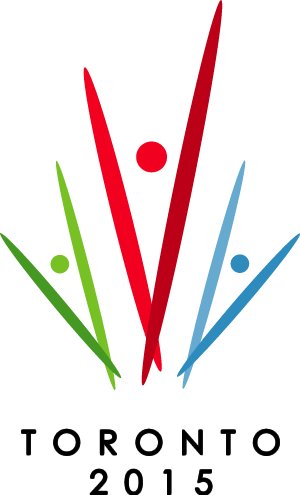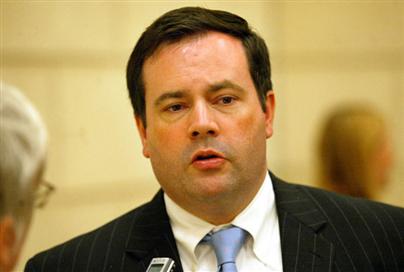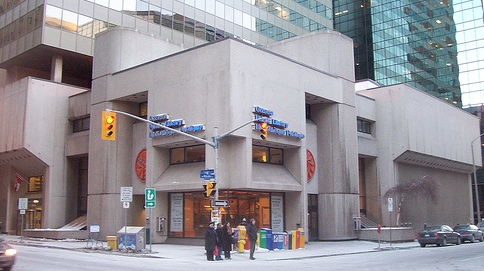Toronto wins 2015 Pan Am Games

Finally, Toronto is a winner, awarded the 2015 Pan Am Games on a first-ballot vote Friday.
The victory seems all the more sweet since the city and region have lost two Olympic bids, two Commonwealth Games bids in Hamilton and couldn’t even get a bid for the world expo off the ground.
“Our commitment, our pledge, our undertaking, our promise is to provide you with the best Pan Am Games ever,” Premier Dalton McGuinty told delegates assembled for the announcement.
“It’s an exciting time for so many of us here.”
Although Toronto’s bid backers arrived in Mexico this week both hopeful and optimistic, arguing the city had the best technical bid, organizers were reluctant to talk about a win – fearing it might jinx our chances.
Organizers took nothing for granted from offering Canadian treats like ice cream to voting delegates of the Pan American Sports Organization to running rehearsal after rehearsal for the final presentation.
And Toronto put on an upbeat, glitzy show that opened with athletes – gymnasts, volleyball players and a tennis player – bouncing into the hotel ballroom, followed by the 60-person strong delegation led by McGuinty.
Interspersed throughout the hour-long presentation were videos from athletes across the Western hemisphere emphasizing the benefits of Toronto including the world’s fastest man, Jamaica’s Usain Bolt, who was in town last summer.
The final video was a moving tale of what might be – youngsters from across the Americas and Caribbean – training and growing up to compete in Toronto in 2015.
Toronto’s presentation drew much applause – unlike Bogota’s and Lima’s which were more formal and featured wrap-up speeches from both their presidents – Colombia’s Alvaro Uribe and Peru’s Alan Garcia.
Politicians who spoke for Toronto’s bid – which is actually a southern Ontario bid stretching from St. Catharines to Oshawa to Barrie – included McGuinty, Mayor David Miller and federal sports minister Gary Lunn.
The $2.4 billion bid – which includes $1 billion for the athletes village in the West Donlands that will include a component of affordable housing after the games – include funding commitments from Ottawa, Queen’s Park and participating municipalities. Ontario is promising to cover any deficits.
The two-week games, held every four years, and open to athletes from across the Americas and the Caribbean, will bring badly needed sports infrastructure to the region.
Toronto will get a new aquatics centre with two 50-metre pools and a separate diving tank plus a high-performance sports training facility at the U of T’s Scarborough campus.
Hamilton is a big winner with a new track and field stadium that will be used by the Tiger-Cats and a new indoor velodrome.
But bid chair David Peterson always insisted the games were about much more than just sport.
Winning the games helps Toronto shed its “loser mentality,” but the games give governments a firm deadline to complete promised projects including transit improvements like the rail link to the Pearson airport.
Lima played the sentimental card – arguing that Peru had never hosted before, and Canada has already had the games twice before in Winnipeg in 1967 and 1999, so it was their turn. Some delegates reportedly said Lima’s organizers were pulling hard on the heart strings.
But in the end, it may have been problems with the 2011 games in Guadalajara that helped put Toronto over the edge. Construction has not even begun on some of the venues, especially the all-important athletes’ village, and organizers were ordered this week to put up a multi-million dollar performance bond to ensure work gets under way.
SOCIALIZE with Abrams & Krochak
![]()
Province to teach money skills in schools

Ontario students will start learning money smarts as early as Grade 4, when Queen’s Park rolls out a new financial literacy curriculum in September 2011.
Prompted by growing debt levels among Canadian youths and reckless personal spending habits that helped trigger the global credit crunch, the province will design lessons that can be worked into subjects up to Grade 12, said Education Minister Kathleen Wynne, who will announce the plan Monday in Toronto.
“The whole issue of how to manage money and risk is a really important concept – money and debt can become difficult issues in later life – but we can’t assume families will discuss these things at home,” said Wynne in an interview.
“But we’re not looking to create a new course; we want to build financial literacy into the existing curriculum.”
The government will create a working group to pinpoint the core concepts to be covered and will work with the non-profit Investor Education Fund to develop training for teachers.
Wynne said several provincial politicians supported the idea after Toronto school trustee Josh Matlow called last spring for a provincial curriculum in financial basics in the wake of the world economic crisis.
“When people feel out of control of their finances it can lead to deep depression, breakups of marriages,” Matlow says. As of January, student loan debt owed to the federal government surpassed $13 billion for the first time (the figure does not include provincial student loan debt). And according to a recent study by the Financial Consumer Agency of Canada, six in 10 Canadians between 18 and 29 are carrying some debt; more than a third of those owe $10,000 or more.
Once the curriculum is finalized, Matlow hopes it will teach students as early as Grade 4 about basics such as budgeting. Eventually he would like them to learn to read the fine print of cellphone and credit card contracts, the effects of a bad credit rating, mortgage financing and how marketers and advertisers target them.
Take our FREE Online Assessment Today!
Socialize with Abrams & Krochak
Minister Kenney Announces Appointment and Reappointments to the Immigration and Refugee Board of Can
One appointment and three reappointments to the Immigration and Refugee Board of Canada (IRB) were announced today by Citizenship, Immigration and Multiculturalism Minister Jason Kenney.
“This government is committed to delivering on our promise to fill vacancies on the Board with qualified individuals as quickly as possible after vacancies arise,” said Minister Kenney.
Luella Gaultier was appointed for a three-year term in the Calgary regional office. Michelle Langelier and Marie-Claude Paquette were reappointed for five-year terms in the Montreal regional office. Kenneth MacLean was reappointed for a five-year term in the Toronto regional office.
These appointments were made in accordance with the IRB’s merit-based appointment process. Since October 2008, Minister Kenney has announced 52 appointments and 22 reappointments to the IRB.
Created in 1989, the IRB is an independent administrative tribunal that reports to Parliament through the Minister of Citizenship, Immigration and Multiculturalism. The Board has three divisions – the Refugee Protection Division, the Immigration Appeal Division and the Immigration Division. The IRB determines refugee protection claims made in Canada, hears immigration appeals, and conducts admissibility hearings and detention reviews.
For biographies on the IRB members, please see the backgrounder http://www.cic.gc.ca/english/department/media/backgrounders/2009/2009-10-27.asp
Take our FREE Online Assessment Today!
Socialize with Abrams & Krochak
Newcomers to Canada benefit from the Library Settlement Partnership at Ottawa Public Library
Ottawa Public Library (OPL) staff, along with partners from Citizenship and Immigration Canada and various settlement agencies, celebrated the Library Settlement Partnerships (LSP) program, a service now available at the OPL that will help newcomers to Ottawa more successfully settle and integrate into their new home. Made possible through a three-way partnership between Citizenship and Immigration Canada, the settlement sector and public libraries, the Library Settlement Partnerships program provide information referral, and other services for newcomers in ten branches of the Ottawa Public Library. The program has been rolled out in 11 communities in Ontario and is funded by Citizenship and Immigration Canada.
“Our government is helping make settlement services more accessible to immigrants,” said Minister of Citizenship, Immigration and Multiculturalism Jason Kenney. “Through this program, newcomers living in the area can access information on housing, transportation and employment opportunities in their neighbourhood library. Improving their access to settlement services will not only ease their transition to life in Canada, but also strengthen the community as a whole.”
“We are enormously proud to be able to provide newcomers with a program that will make their move to a new country a little bit easier. By offering the LSP program in our branches, newcomers to Ottawa can make a smoother transition to their new home,” said Barbara Clubb, city librarian. “The library already offers many services to newcomers of all ages. These range from story times in Mandarin to preparing for the citizenship test in Arabic. The Library Settlement Partnerships program makes a wonderful complement to the already existing services.”
The celebration of the Library Settlement Partnerships program, held at the Main Branch, coincided with the official unveiling of the branch’s recently renovated Newcomer Services space. The space provides the newcomer information officer a dedicated area in which to meet with clients and develop programs to help newcomers settle into the community. The funding to construct the Newcomer Services space was provided by the Friends of the Ottawa Public Library Association (FOPLA).
LSP partners include Citizenship & Immigration Canada, the Ottawa Public Library, the Ottawa Community Immigrant Services Organization, the Lebanese and Arab Social Services Agency, the Somali Centre for Family Services, the Ottawa Chinese Community Services Centre and Conseil Économique & Social d’Ottawa-Carleton.
For more information about the many services offered to newcomers at OPL, please visit the OPL website at http://www.BiblioOttawaLibrary.ca or call Info Service at 613-580-2940.
Take our FREE Online Assessment Today!
Socialize with Abrams & Krochak
Archives
- June 2025
- March 2025
- February 2025
- December 2024
- October 2024
- June 2024
- May 2024
- April 2024
- January 2024
- November 2023
- July 2023
- June 2023
- May 2023
- January 2023
- November 2022
- April 2022
- March 2022
- February 2022
- October 2021
- June 2021
- April 2021
- October 2020
- September 2020
- June 2020
- May 2020
- April 2020
- March 2020
- December 2019
- January 2019
- December 2018
- November 2018
- August 2018
- June 2018
- April 2018
- January 2018
- December 2017
- November 2017
- April 2017
- January 2017
- December 2016
- November 2016
- October 2016
- September 2016
- August 2016
- August 2015
- January 2015
- December 2014
- November 2014
- June 2014
- April 2014
- March 2014
- February 2014
- December 2013
- May 2013
- April 2013
- January 2013
- December 2012
- August 2012
- June 2012
- March 2012
- January 2012
- September 2011
- August 2011
- July 2011
- June 2011
- February 2011
- January 2011
- December 2010
- November 2010
- September 2010
- August 2010
- July 2010
- June 2010
- May 2010
- April 2010
- March 2010
- February 2010
- January 2010
- December 2009
- November 2009
- October 2009
- September 2009
- August 2009
- August 2008
- July 2008
- June 2008
- May 2008
- April 2008
- March 2008
- February 2008
- January 2008


